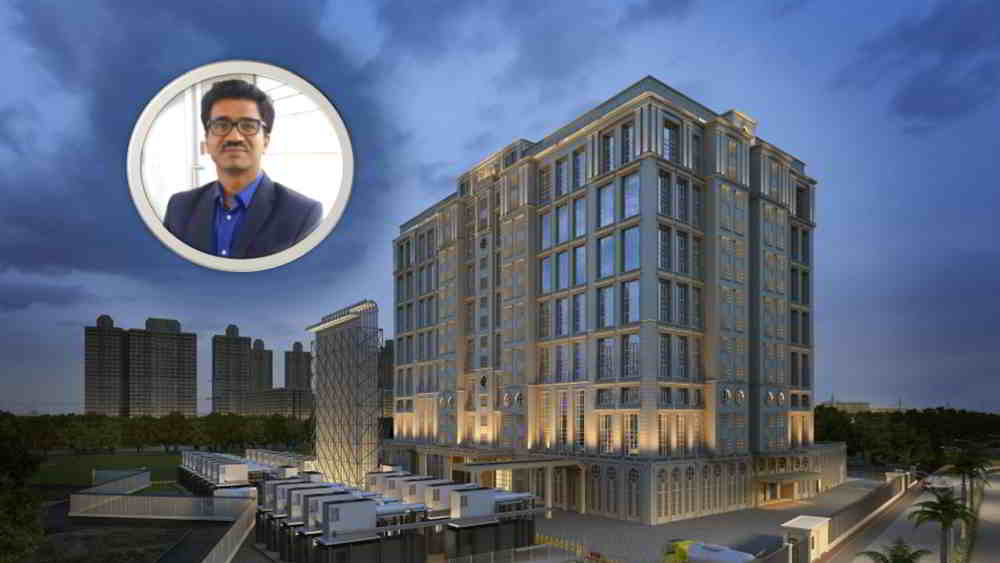“If granaries are important for grains and food grains, if a warehouse is important for manufacturing goods, a good data center is very important for a digital economy.”
— Shri Ravi Shankar Prasad, Minister for Communications, Electronics & Information Technology and Law & Justice, Government of India, at the Yotta NM1 data center launch.
Shri Ravi Shankar Prasad is one of India’s few ministers who understand the importance of data centers as a driver of Digital India. Speaking at the launch of Yotta’s NM1 data center in Navi Mumbai last year, he said, “A good data center infrastructure is critical for a robust digital economy. For Digital India’s success, we must become a big global Data Refinery – data cleaning, data processing, data innovation, and research – and all of this will need to be done keeping in mind data privacy laws. We shall never compromise on the data sovereignty of India. The data economy has a lot of potential and in all its promise – a good data center is the pillar it builds on.”
India has one of the lowest data rates globally, and most of its citizens are bypassing computers and accessing the Internet via their smartphones. A massive stream of digital data is downloaded every day by hundreds of millions of consumers in India. Indians are well versed with instant messaging apps like WhatsApp, Telegram and Signal – and social media apps. Streaming content from YouTube and many OTT apps is a daily habit for Indians. With forced lockdowns imposed in Indian cities last year, online shopping and e-commerce soared, with a chunk of shoppers coming from Tier 2 and Tier 3 cities.
All this is generating massive amounts of data. India’s data consumption is expected to grow at a CAGR of 72.6%. And all this data needs to be stored and processed in data centers – the warehouses of data. Not surprisingly, the data center market in India doubled in the last three years.
Most data center operators in India are busy constructing new buildings and data center parks. It’s no longer about planning a single building – it’s really about scale, which means building data center parks with multiple buildings. We visited a couple of data centers in the past two years and spoke to their leadership and operational heads. They all say the same thing: Capacity in a new building gets utilized in 18 months or less. One data center operator said their second building was already booked by a single customer, even as it was being constructed. And many global players (Colt, Equinix, Princeton Digital Group, Ascendas Capital) have plans to enter the Indian market. The ST Telemedia Group and NTT Japan continue to invest in their Indian data centers (STT GDC India and NTT-Netmagic, respectively). And Adani Enterprises Limited (Adani is a significant player in power) is also coming into this market.
UPDATE: 23 Feb: Adani Enterprises and EdgeConneX, a global data centers operator with 50 facilities in 30 markets around the world, just announced the establishment of a 50:50 joint venture. They will develop data centers throughout India.
Many real estate developers in India also have plans to get into the business of constructing data center buildings. The Hiranandani Group, a primary real estate developer, made its foray into the data center business in 2019. Its data center arm is named Yotta Infrastructure.
Meet India’s “data center man”
During our December 2020 tour of NM1, the first data center building constructed by Yotta Infrastructure in Panvel, Navi Mumbai, we witnessed the massive effort and investment that a data center operator has to fulfil to meet customer requirements. Every aspect has to be carefully considered, with fault tolerance in mind. NM1 is Asia’s largest and the world’s second-largest Uptime Institute Tier IV Data Center (TCDD). This standard is one of the most stringent industry data center certifications.
RELATED STORY
Yotta’s first Datacenter NM1 Receives Rare Tier IV Certification by Uptime Institute (USA)

Sunil Gupta, Co-founder & CEO – Yotta Infrastructure
We spoke to Sunil Gupta, Co-founder & CEO – Yotta Infrastructure. In his 21-year career, Sunil has engineered and helped build 15 data centers at three companies (Reliance Communications [RCOM], NTT-Netmagic, and Yotta Infrastructure). After numerous interactions with global customers who sought data center services in India and with local customers, he knows what customers expect — and what it takes for a player in the data center business to sustain their business in the long-term. In the industry, he is known as ‘India’s data center man’.
We’ve known Sunil Gupta since his Netmagic days (watch our video interview here). He’s affable, very approachable, and highly knowledgeable — a one-person encyclopedia of data center knowledge, if you may.
Gupta is highly optimistic about the growth of the data center industry in India.
India will go from the current 400 MW capacity to 1,000 – 1,200 MW in the next five years. Based on calculations, I think India might need ten times more capacity in the next 7 – 10 years.”
— Sunil Gupta, Co-founder & CEO – Yotta Infrastructure
The tipping point: The entry of Hyperscalers
The year 2014-2015 was a tipping point in the Indian data center industry. Until then, a data center operator would build a 1,000 rack data center that consumed 6 – 8 megawatts (MW). Data center capacity is gauged in racks and power consumption. This capacity was sold to multiple customers over a period of 4 – 5 years.
The first hyperscaler customer came to India in 2014 – 2015 and had an immediate requirement for 1,000 racks.
“Until then, we all had taken our baby steps to expand our businesses. No one was prepared for this type of growth — in terms of scalability, the size of data center buildings, the amount of power required, the amount of fibre required, the quality of buildings required. The demand for global hyperscalers, in terms of quality, was humongous,” said Gupta.
That first customer changed the dynamics for the entire industry. Suddenly the size, scale and quality of the business increased from a 6 MW data center to at least a 20 – 30 MW data center. Today, that is a standard capacity for one data center building – and operators have plans to build 4 – 5 buildings in the next five years. Power for the entire data center park will eventually touch 225 – 360 MW. That would amount to 30,000 racks, with each building typically offering 5,000 – 7000 racks capacity. A building is ready for launch in 12 – 18 months.
The second and the third hyperscaler customers followed within six months of the first. And then the industry had to prepare for scale.
We’ve indeed come a long way since the 1,000 rack days!
Who are the hyperscalers?
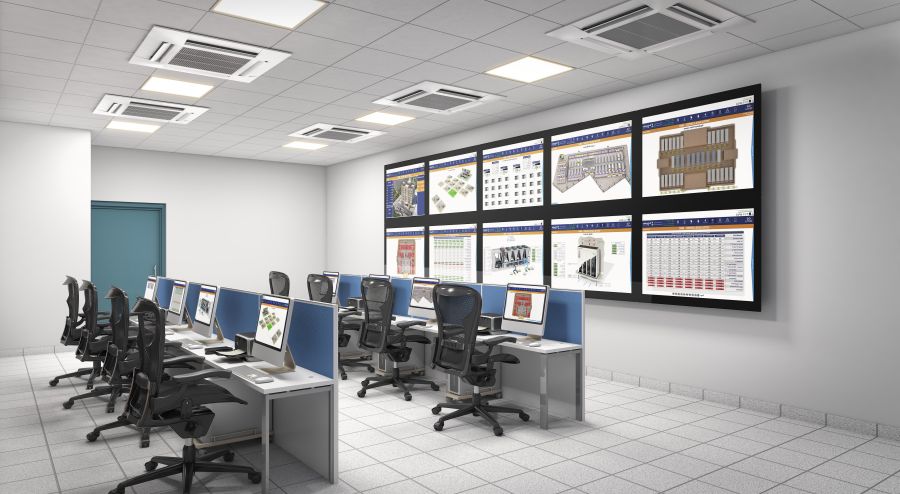
State-of-the-art BMS room at NM1, Navi Mumbai
Hyperscalers are those who have enormous infrastructure requirements and constantly scale up. Gupta says there are just ten or so hyperscalers in the world, and these are the big tech companies like Amazon, Microsoft Azure, IBM Cloud, Google Cloud Platform, and social media platforms. They are in the colocation space. A minimum requirement for 3 MW and 500 – 600 racks is considered as a hyperscaler order. To serve these customers, a data center operator has to think big – and build data center parks with multiple buildings.
“To do this, you need large buildings. You need to acquire land and source power. That means you are dealing with multiple government departments at the central and state level. It is not easy to do this in India compared to a mature market like Singapore or the U.S.,” informed Gupta.
With land shortages within Indian cities, data center providers had to acquire land and construct data center parks outside these cities. The other crucial requirement is power, which needs to come from various power companies because of a data centers’ power redundancy requirements. The third requirement is engineering expertise, especially in scaling up the infrastructure. The demand for “hyperscale data centers” from international customers is driving this demand.
A hyperscale data center is defined as one offering a portfolio of highly scalable applications and storage services to businesses. According to IDC, a hyperscale data center offers upwards of 5,000 servers with an aggregated space of at least 10,000 sq. ft. across floors and buildings within the same campus.
According to ReportLinker, the global hyperscale data center market is expected to grow at a CAGR of over 9 per cent during the period 2018–2024. The report cites three key factors that will contribute to this growth during the forecast period, namely: Data regulation to Increase facilities investment, increasing procurement of renewable energy for new facilities, increase in deployment of the software-defined data center (SDDC).
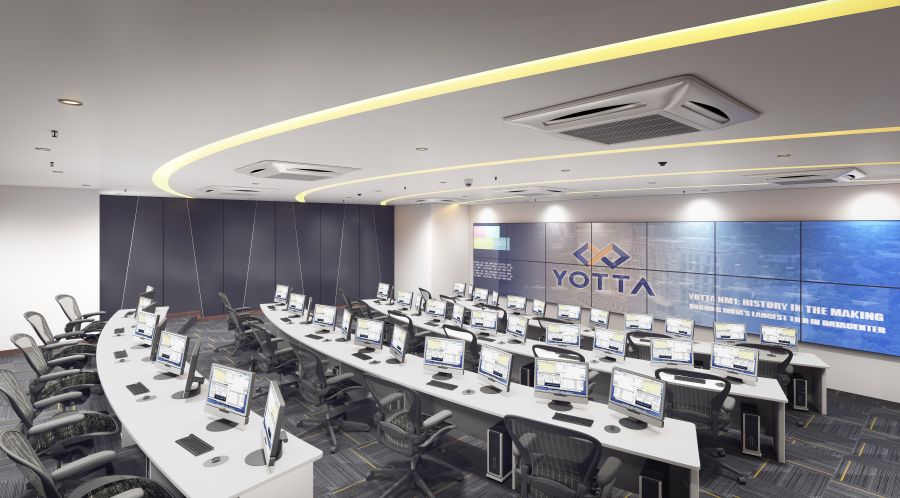
Network Operations Center at NM1, Navi Mumbai
RELATED STORY
Why Data Centers in India are Going Hyperscale
PropCo or OpCo?
A data center company can either be a Property Company (PropCo) or an Operating Company (OpCo). A PropCo will construct the building on acquired land and hand it over to the data center operator. The OpCo does the engineering within the building, installs the IT infrastructure and connectivity in the server halls. They outsource the building construction to a real estate company. However, the Hiranandani Group has been in the real estate business for years, so it has the advantage of being both an OpCo and a PropCo. Plus, it acquires and owns land. It also owns energy businesses like Tuco and H-Energy.
“In India, many real estate developers are thinking about getting into the data center business. But they will remain in the PropCo space. They will never get into the running of the data centers (OpCo),” opines Gupta.
The advantage of doing both PropCo and OpCo is faster time to market.
“We were able to launch this building (NM1) in less than 12 months, right from construction to launch, and this was possible because all the expertise is in-house,” said Gupta.
Since Yotta acquired the land, the only thing that could slow things down was getting clearances from various government departments.
Fortunately, states like Maharashtra, Uttar Pradesh and Telangana offer single-window clearances and rate high on the ease of doing business index. And that’s why Yotta has been able to move quickly with its plans in Maharashtra and Uttar Pradesh. Tamil Nadu/Chennai could follow this example!
Yotta positions itself as a Managed Data center Service Provider that designs, builds and operates large-scale hyperdensity data center parks.
Let’s take a look at the Group’s plans and how it segments its data center business.
Market segmentation
The data center market can be segmented into two categories: Colocation Services for hyperscalers. Colocation providers will have few customers, but each customer will have massive requirements. “Yotta Colo will provide wholescale colocation. Here we provide racks on demand. Some customers may ask for entire floors. And some may need a dedicated building for themselves,” said Gupta.
The second category is Enterprise IT Services. It includes a bouquet of managed services: private cloud, public cloud, hybrid cloud, managed security, IT management, desktop as a service, managed security, storage, BCP/DR, colocation, and even GPUs.
Gupta informs us that Yotta wants to play in both segments. It has two business segments: Yotta Colo (for hyperscalers) and Yotta Tech (for enterprises). While there is an equal focus on these two segments, for now, Gupta thinks that, eventually, 60% – 65% of the business will come from the hyperscalers /colocation as their business requirements are enormous. And 30 – 40% will come from the Enterprise segment (managed IT services).
Speaking at the launch of Yotta’s NM1 data center in July 2020, Gupta said, “Foreign hyperscale cloud players and OTT companies are looking to set up large bases in India. A hyper-scale data centre park with a scalable ecosystem of power, fibre and skillsets, like what Yotta offers, gives them quick access to large colo capacity from day one, from a multi-tenanted data centre like NM1. It also gives them long-term sustainability at the same site with the availability of customised single tenanted data centres and in-campus fibre networks. Enterprises can expect from Yotta a fully managed hybrid IT infrastructure – a combination of colo, private cloud, public cloud and IT management skills on a low-risk, pay-as-you-use model that creates a win-win situation for everyone.”
Yotta’s $2 billion investment
The Hiranandani Group has committed an investment of $2 billion for Yotta Infrastructure (data centers) in the next 7 – 10 years. It is building self-sustaining hyperscale data center parks at Navi Mumbai, Chennai and Delhi/NCR.
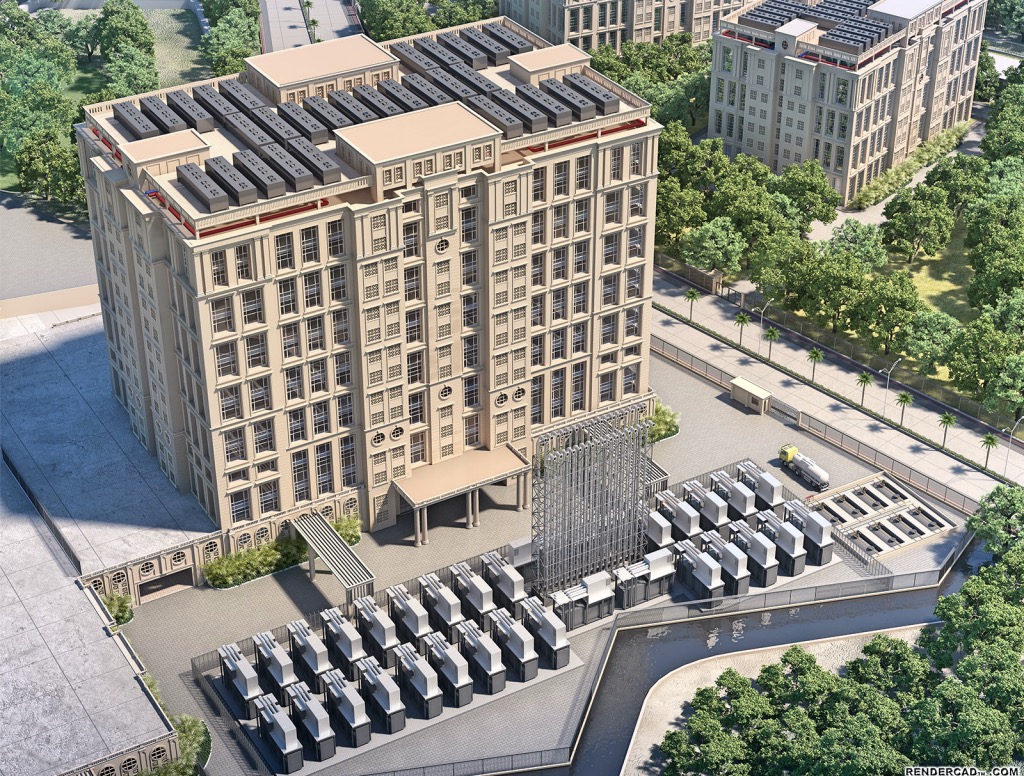
Yotta Infrastructure NM1 Data Center at Navi Mumbai. This is Asia’s largest Tier IV certified (Uptime Institute) data center and the second largest in the world.
Navi Mumbai: The data center park in Navi Mumbai will eventually have five buildings spread over 13 acres. The total built-up area will be 3 million sq. ft.
With proximity to Mumbai and Pune, Yotta NM1 Data Center is located in the 600-acre Hiranandani Fortune City in Panvel. Yotta NM1 is the first of the five data center buildings coming up at this Integrated Yotta Data Center Park, which, once fully built, will have an overall capacity of 30,000 racks and 225 – 360 MW power.
At 820,000 sq. ft, 7,200 racks, 50 MW of power and four redundant self-owned fibre paths connecting the DC to national highways, the first DC Yotta NM1 itself offers a highly scalable data center infrastructure, capable of hosting global cloud, content and OTT operators besides the mission-critical applications of enterprises and governments. In future, the data center buildings will be powered by a captive solar power plant and an on-site captive gas-based co-gen power plant (see ‘Going Hyper Green‘).
Read more about Yotta NM1 Data Center
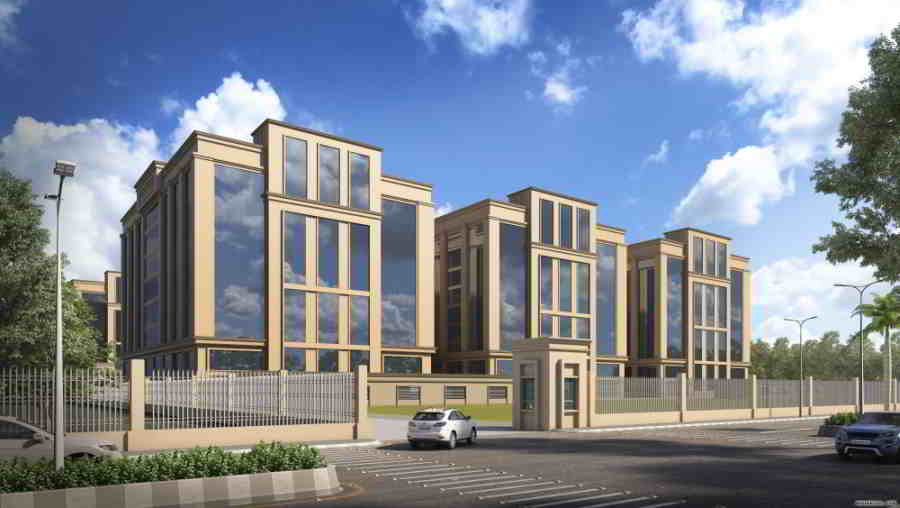
Yotta Infrastructure to set up 20-Acre Datacenter Park in Greater Noida
Delhi/NCR: The Bhoomi Pujan for the Delhi/NCR data center park was conducted in November 2020. The first building is expected to be operational by June 2022.
The 20-acre hyperscale datacenter park in the Greater Noida region will consist of 6 interconnected datacenter buildings offering 30,000 racks capacity and 250 MW of power. It will be set up at an estimated cost of INR 6,000-7,000 Crore (appx USD 950 million).
Read more about the Delhi NCR Data Center
RELATED STORIES
Yotta Infrastructure to Set up 20-Acre Datacenter Park in Greater Noida
European Data Center Power Market is Expected to cross $5 Bn by 2026
Chennai: In Chennai, the Hiranandani Group is constructing seven data center buildings costing INR 3,000 – 4,000 crore. The buildings will be built over a period of 8 – 10 years. The proposed Data Center Park will be built on a 20-acre campus at Hiranandani Parks on the Singaperumal – Oragadam highway.
These seven buildings will offer 30,000 racks. The data centers will consume 150 – 250 MW.
Read more about the Chennai data center park
Going Hyper Green
Power comprises 80% of operational costs for data centers. So, if operators can bring this cost down, they can improve their bottom lines. The way to do that is to turn to alternate and green energy sources.
Power is required for the cooling systems as well as the IT systems. If less cooling is needed (as in countries nearer to the arctic region), the costs can reduce. However, this is not possible in India, where the climate is either humid or extremely hot. So the only way out is to opt for the captive, self-owned sustainable power solutions.
Hiranandani Group is currently sourcing power for its data centers from its own energy distribution company called Tuco. According to Gupta, it gets power at 15% less than what it would cost in Mumbai or Navi Mumbai. And it passes that benefit to its customers.
The Group is also building a solar farm at Sindhudurg, near Goa. The farm will offer 30 – 40 MW of green power. Gupta says that the plant will be ready in two years, and the solar farm will serve almost 30 – 40% of its power requirements.
But that won’t be enough to serve its complete power requirements. What’s more, solar power can only be generated during the day, and it cannot be stored (for cost and regulatory reasons).
But Hiranandani Group has another ace in its hands – its gas business called H-Energy. It is looking to build gas turbines near its data centers to supply gas-based energy to power its data center parks.
These initiatives will make it a hyper green data center and bring energy costs down further.
The other important point to note is that power savings, particularly for cooling, can bring down the all-crucial PUE rating.
Yotta Infrastructure aims for a PUE rating of 1.4 (already proven) – which will be the best rating in India.
PUE (power usage efficiency) is derived by a formula:
(Cooling power + IT power) / IT Power.
A rating closer to 1 means higher energy efficiency and lower energy costs.
Engines of the Digital Economy
Data centers are the engines for India’s digital economy and for achieving the Digital India vision. The Indian government regards data centers as “essential infrastructure” and not an industry. Creating more data center parks will result in job creation and opportunities for tens of thousands of citizens.
The government can do its part by providing performance-linked incentives to data center operators. Faster clearances and land provision with tax sops will also lead to the rapid growth of the data center market in India.
Other states like West Bengal are also welcoming data center players, and we have learned that MoUs have been signed. So, there is going to be some healthy competition between Indian states!
We have written much about Yotta Infrastructure in this long-form article, and that is just one player. Others to watch are NTT-Netmagic, STT GDC India, and CtrlS. The entry of new global players will also boost the market.
The next five to seven years will be promising for India’s data center industry, which is poised to grow 10X in terms of capacity.
YOU MIGHT ALSO LIKE
10 Data Center Trends to Expect in 2021
Essar Logs Out of Captive Datacenter and Moves to Yotta Infrastructure Datacenter

